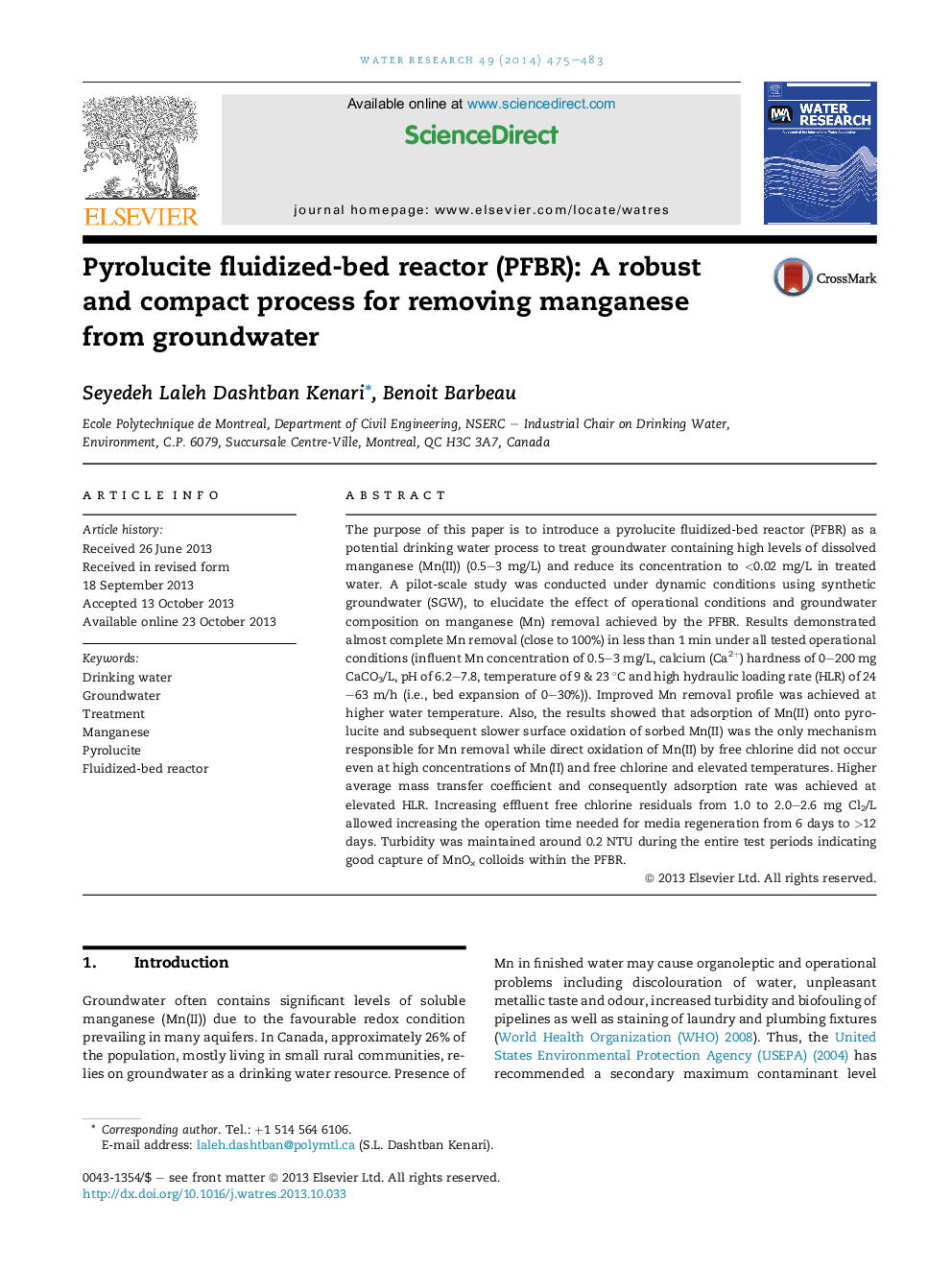| کد مقاله | کد نشریه | سال انتشار | مقاله انگلیسی | نسخه تمام متن |
|---|---|---|---|---|
| 4481727 | 1623119 | 2014 | 9 صفحه PDF | دانلود رایگان |

• The potential use of a PFBR to remove high Mn levels from groundwater is shown.
• Close to 100% Mn removal was achieved in <1 min under all tested conditions.
• Improved Mn removal profile was achieved at higher water temperature and HLR.
• The PFBR performance is relatively insensitive to pH and calcium concentrations.
• Adequate free chlorine residual plays a major role in long-term stability of PFBR.
The purpose of this paper is to introduce a pyrolucite fluidized-bed reactor (PFBR) as a potential drinking water process to treat groundwater containing high levels of dissolved manganese (Mn(II)) (0.5–3 mg/L) and reduce its concentration to <0.02 mg/L in treated water. A pilot-scale study was conducted under dynamic conditions using synthetic groundwater (SGW), to elucidate the effect of operational conditions and groundwater composition on manganese (Mn) removal achieved by the PFBR. Results demonstrated almost complete Mn removal (close to 100%) in less than 1 min under all tested operational conditions (influent Mn concentration of 0.5–3 mg/L, calcium (Ca2+) hardness of 0–200 mg CaCO3/L, pH of 6.2–7.8, temperature of 9 & 23 °C and high hydraulic loading rate (HLR) of 24–63 m/h (i.e., bed expansion of 0–30%)). Improved Mn removal profile was achieved at higher water temperature. Also, the results showed that adsorption of Mn(II) onto pyrolucite and subsequent slower surface oxidation of sorbed Mn(II) was the only mechanism responsible for Mn removal while direct oxidation of Mn(II) by free chlorine did not occur even at high concentrations of Mn(II) and free chlorine and elevated temperatures. Higher average mass transfer coefficient and consequently adsorption rate was achieved at elevated HLR. Increasing effluent free chlorine residuals from 1.0 to 2.0–2.6 mg Cl2/L allowed increasing the operation time needed for media regeneration from 6 days to >12 days. Turbidity was maintained around 0.2 NTU during the entire test periods indicating good capture of MnOx colloids within the PFBR.
Figure optionsDownload high-quality image (279 K)Download as PowerPoint slide
Journal: Water Research - Volume 49, 1 February 2014, Pages 475–483